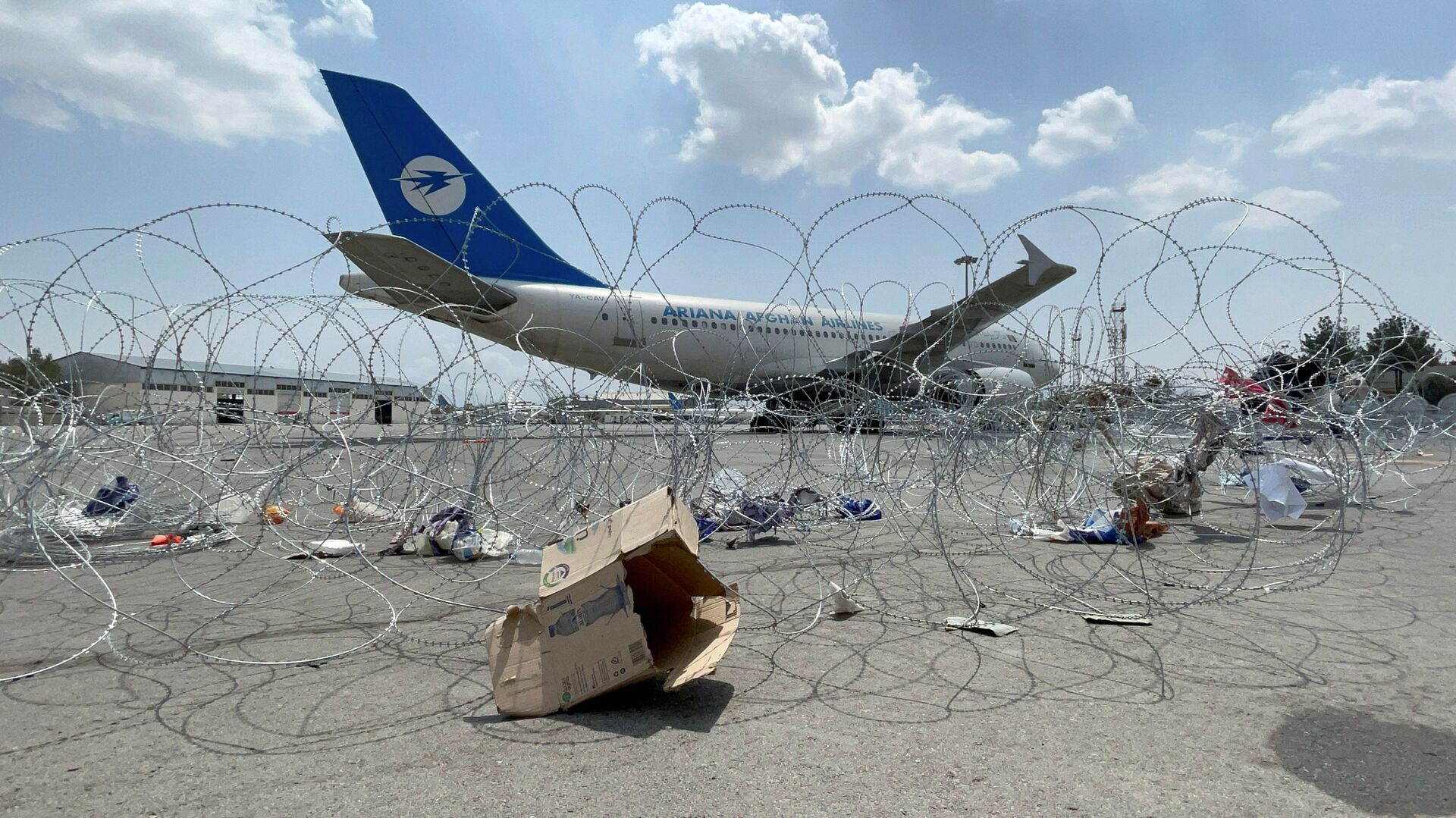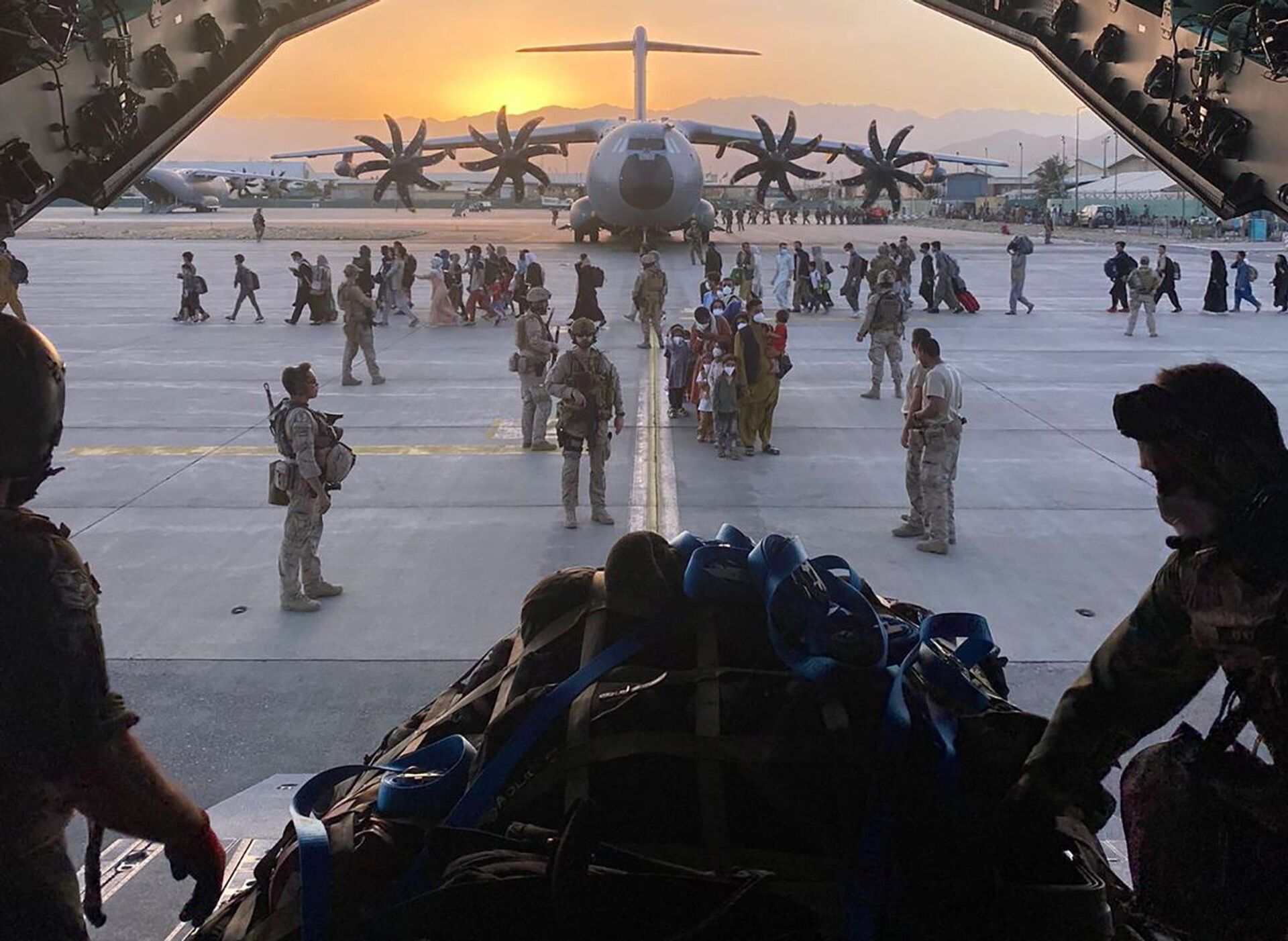Five Afghans Planned to Hijack Commercial Aircraft During Kabul Evacuation, US Air Force Reveals
01:07 GMT 14.10.2021 (Updated: 18:35 GMT 19.10.2022)

© REUTERS / STRINGER
Subscribe
In a Wednesday bulletin about the August evacuation from Kabul’s Hamid Karzai International Airport, the US Air Force (USAF) unveiled many new details about the operation, including that airmen successfully prevented a planned hijacking of a commercial airliner by some of the evacuees.
The article, about how airmen helped prepare for Noncombatant Evacuation Operations (NEO) from Afghanistan beginning in July, well before the sudden collapse of the US-backed Afghan government in mid-August, highlighted many elements of the chaotic situation never before seen.
"The hair on the back of your necks should be standing up; this is not the Afghanistan we all knew,” USAF Col. Russell Cook, commander of the 23rd Wing, told a group of airmen at a mission briefing on July 23.
"I knew this was going to be different - all of the assumptions and experiences from the past in Afghanistan were invalid," Cook said in the article. "I spoke with the leadership before they left and made sure they understood that. By the time they walked out the door, I was 100% confident that the team was ready to execute their critical life-saving mission in the most challenging of environments."
The Biden administration was firmly set on August 31 as the deadline for withdrawing all remaining US assets from Afghanistan, ending the 20-year-long occupation war that killed at least 240,000 people. The US had made a ceasefire agreement with the Taliban* to be out of the country by May 1, but US President Joe Biden arbitrarily extended the withdrawal date by several months.
Meanwhile, the Sunni extremist group launched a widespread offensive that brought most of the country under its control by early August. By August 14, with US personnel evacuations far from complete, then-Afghan President Ashraf Ghani suddenly fled the capital city ahead of the Taliban’s arrival, and the group captured the city without a fight.
The capture, at least a month before it was expected, forced the US timetable up and set off a series of critical events, including the mobbing of the airport by hundreds of thousands of would-be refugees, many of them collaborators with the US occupation who Washington had promised to take with them when they left. The US marshalled aircraft both military and civilian to the airport, along with 6,000 troops in case of an attack by the Taliban or another group, such as Daesh-Khorasan* or al-Qaeda*.
Organized Chaos
As the USAF story recounts, told largely from the perspective of Lt. Col. Brian Desautels, commander of a Personnel Recovery Task Force (PRTF), his 170 airmen trained for rescue operations quickly became the equivalent of swiss army knives who filled many roles during the chaotic evacuation.
One of their major tasks included keeping track of all the aircraft coming into and out of Hamid Karzai airport. At first it was almost exclusively USAF cargo planes like C-130s and C-17s, but by August 22, the Pentagon had enlisted the service of commercial airliners, as well. There were also transports from the many nations with embassies or detachments in Kabul who came to pick up their personnel, some of whom had to be retrieved via helicopter.

Afghan collaborators, their families, Spanish soldiers and members of the embassy board a Spanish military plane as part of their evacuation, at the Hamid Karzai International Airport in Kabul, Afghanistan, August 27, 2021
© REUTERS / SPAIN MINISTRY OF DEFENSE
"The data they were tracking was pivotal to managing airflow/airspace and requests for additional airlift support based on the numbers they got through the gates," Desautels said.
The airmen also helped with processing people in the crowds, finding those with paperwork making them eligible to leave and bumping them to the front of the line, since the Marines were all tasked with security. When Daesh attacked the crowd outside the gates on August 26, the airmen helped care for the wounded.
Desautels described some of the harrowing events of the day after the Taliban entered Kabul, as Afghans rushed to get a spot on one of the military transports, which were filled to the brim with refugees. He mentions the infamous incident, seen in widely circulated footage, in which people clung to the hull and climbed inside the wheel well of a departing C-17, only to fall from the sky moments after takeoff, or be found frozen to death inside the well upon arrival in Qatar.
“Not caught on video and less than a minute later, both HC-130J Combat King II took off on a sliver of remaining runway,” the article recounts. “With seconds to spare, they were airborne, skimming just 10 feet above the crowd.”
He also described a situation in which a commercial aircraft of unknown type was almost seized by five people on board.
Having received an intelligence tip, "our team worked to get them clear of the NATO ramp, relocated to the north side away from friendly forces, then ultimately onto the south side where the situation was handled," he explained.
The bulletin describes other elements of the missions as well, including that apparently many of the airmen didn’t have their COVID-19 vaccines, necessitating a mass vaccination effort, and that they stay on board their aircraft during stopovers in several countries along the way to Afghanistan.
In the end, the airlift successfully evacuated 124,000 people, 6,000 of whom were Americans, according to the Pentagon.
*Terrorist groups banned in Russia and many other countries



